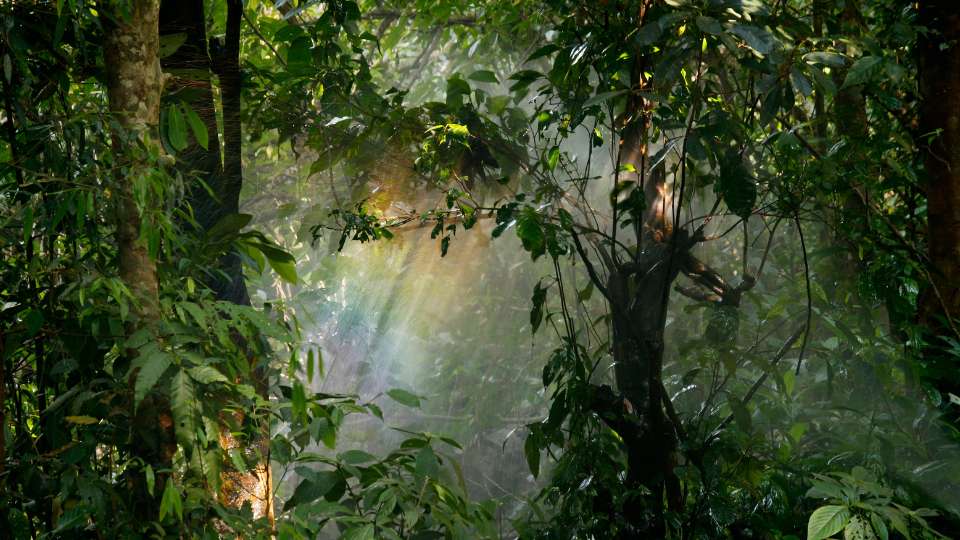Understanding the variety of Diverse Habitats on Earth and the unique adaptations of their inhabitants provides insight into the complexity of our planet’s ecosystems. From the lush rainforests to the arid deserts, each habitat supports a distinct array of life forms that have evolved to thrive under specific environmental conditions.
1. Rainforests
A. Characteristics
- Climate: Rainforests are characterized by high humidity and temperatures, with rainfall occurring year-round. They are typically found near the equator.
- Layers: Rainforests have multiple layers, including the emergent layer, canopy, understory, and forest floor. Each layer supports different types of flora and fauna.
B. Biodiversity
- Flora: Rainforests are home to a vast array of plant species, including towering trees like mahogany and kapok, as well as dense vegetation like ferns and orchids.
- Fauna: The diverse animal life includes primates (e.g., howler monkeys), large mammals (e.g., jaguars), and countless insect species (e.g., butterflies). Birds such as toucans and parrots are also common.
- Adaptations: Many rainforest species have developed unique adaptations such as camouflage, arboreal lifestyles (living in trees), and symbiotic relationships.
C. Conservation Issues
- Deforestation: Logging, agriculture, and urbanization lead to habitat loss and threaten biodiversity.
- Climate Change: Changes in climate can alter rainfall patterns and temperature, affecting rainforest ecosystems.
D. Conservation Efforts
- Protected Areas: Establishing reserves and national parks to preserve rainforest habitats.
- Sustainable Practices: Promoting sustainable logging and agricultural practices to reduce environmental impact.
2. Temperate Forests in Diverse Habitats
A. Characteristics
- Climate: Temperate forests experience four distinct seasons with moderate rainfall throughout the year. They are found in regions with moderate temperatures, such as parts of North America, Europe, and Asia.
- Types: Includes deciduous forests (where trees shed leaves seasonally) and evergreen forests (where conifers retain leaves year-round).
B. Biodiversity
- Flora: Deciduous forests are dominated by trees like oak, maple, and birch. Evergreen forests feature conifers such as pine, spruce, and fir.
- Fauna: Animals include mammals like deer, black bears, and foxes, as well as a variety of birds and insects.
- Adaptations: Species have adapted to seasonal changes in temperature and food availability, with behaviors like hibernation or migration.
C. Conservation Issues
- Urban Expansion: Development and agriculture lead to habitat fragmentation.
- Invasive Species: Non-native species can disrupt local ecosystems.
D. Conservation Efforts
- Reforestation: Planting trees to restore degraded areas in Diverse Habitats.
- Habitat Connectivity: Creating corridors to connect fragmented forest areas.

3. Grasslands
A. Characteristics
- Climate: Grasslands experience moderate to low rainfall and have distinct wet and dry seasons. They are found in regions such as the African savannah, the North American prairies, and the South American pampas in Diverse Habitats.
- Vegetation: Dominated by grasses with few trees or shrubs.
B. Biodiversity
- Flora: Includes various grass species, along with wildflowers and shrubs.
- Fauna: Home to large herbivores like elephants and bison, as well as predators such as lions and wolves. Grasslands also support numerous bird species and insects.
- Adaptations: Animals are adapted to wide-ranging habitats and seasonal food availability, with behaviors such as migration and grazing patterns.
C. Conservation Issues
- Agricultural Conversion: Conversion of grasslands to cropland threatens biodiversity.
- Climate Change: Altered precipitation patterns and temperatures can impact grassland ecosystems.
D. Conservation Efforts
- Protected Areas: Establishing national parks and reserves to conserve grassland ecosystems.
- Sustainable Grazing: Implementing practices that balance livestock grazing with ecosystem health in Diverse Habitats.
4. Deserts
A. Characteristics
- Climate: Deserts have extremely low precipitation and high temperature fluctuations between day and night. They are found in regions such as the Sahara, the Mojave, and the Gobi.
- Vegetation: Vegetation is sparse, with hardy plants such as cacti, xerophyte shrubs, and drought-resistant grasses in Diverse Habitats.
- Flora: Includes drought-resistant plants like cacti and succulents, which have adaptations to conserve water.
- Fauna: Animals include species like camels, lizards, and rodents, as well as nocturnal creatures such as owls and bats.
- Adaptations: Desert species have developed adaptations such as water storage, burrowing behavior, and nocturnal lifestyles to cope with extreme conditions.
C. Conservation Issues
- Desertification: Land degradation caused by overgrazing, deforestation, and climate change.
- Resource Extraction: Mining and oil extraction can damage delicate desert ecosystems.
D. Conservation Efforts
- Land Management: Implementing sustainable land use practices to prevent desertification.
- Habitat Restoration: Rehabilitating areas affected by resource extraction and degradation in Diverse Habitats.
5. Wetlands
A. Characteristics
- Climate: Wetlands occur in regions with high water availability, including marshes, swamps, and bogs. They can be found in both tropical and temperate climates.
- Hydrology: Wetlands are characterized by water-saturated soils and standing water, which can be permanent or seasonal in Diverse Habitats.
B. Biodiversity
- Flora: Includes aquatic plants such as reeds, cattails, and mangroves, as well as floating plants like water lilies.
- Fauna: Home to diverse species including amphibians, fish, birds, and insects. Wetlands are crucial for migratory bird species.
- Adaptations: Species are adapted to fluctuating water levels and varying oxygen availability in waterlogged soils.
C. Conservation Issues
- Drainage and Development: Wetlands are often drained for agriculture or development, leading to habitat loss.
- Pollution: Runoff from agriculture and industrial activities can degrade water quality and impact wetland ecosystems in Diverse Habitats.
D. Conservation Efforts
- Wetland Protection: Establishing protected areas and conservation programs to preserve wetland habitats.
- Restoration Projects: Rehabilitating drained or degraded wetlands to restore their ecological functions.
6. Conclusion
A. Summary of Diverse Habitats
- Each habitat, from rainforests to deserts, has unique characteristics and supports a diverse array of life forms, each adapted to its specific environment in Diverse Habitats.
B. Importance of Conservation
- Protecting these habitats is crucial for maintaining biodiversity and ensuring the health of our planet’s ecosystems. Efforts to conserve and restore these environments are vital for the future of both wildlife and human populations in Diverse Habitats.
